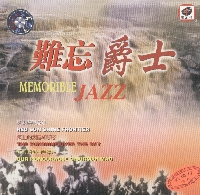Products from the Red Sun Fever
Pop and rock versions of the old revolutionary songs praising the sun began flooding the Chinese music market since the late 1980s, a trend which culminated in the so-called “Red Sun Fever,” 红太阳热 around the centenary of Mao’s birthday in 1993: millions of tapes and CDs with pop, rap, jazz and rock versions of the old songs in praise of Mao were being published almost by the day. Within a few months in 1991 more than one million copies sold, 14 million by 1993, 72 million by 2006 and 80 million by 2008: the movement has not subsided, to the contrary (Barmé 1999:186; Lee 1995:99).
Some of these songs epitomize the romantic apotheosis which is part of earlier propaganda versions of Red is the East. One remake of Mao quotation songs published in 1991 on a CD called Quotation Songs by Mao: A Medley of Rocksongs in Praise of a Great Man 毛主席语录歌伟人颂摇滚联唱 (see ill. 2.5 a mus 2.3), for example, begins with Red is the East played, in a kitsch romantic version, on a slightly out-of-tune Chinese glockenspiel backed by a choir reciting from the original text of the song, “The fact that China has brought forth a Mao Zedong is the greatest pride of China’s people” 中国出了个毛泽东, 这是中国人民的骄傲.
One of the more ingenious variations of “Red is the East,” Zhao Dadi’s 赵大地 (1965-) remake, mixes elements from Chinese folksong, suona 唢呐 playing, Chinese gongs, Hammond organ and pop strings, and appears on a CD produced from a Tianjin concert of 2003 in memory of Mao’s 110th birthday, entitled Red Songs of Praise 1 红色赞歌 1 (see ill. 2.5d mus 2.5) Even in this exuberant version, with the interjected howls and cheers so typical of Chinese folksong, and thus slightly lacking the seriousness and devotion which had been part and parcel of earlier propaganda and pop versions of the song, in the end, the musical message, can still be considered to be one of reverence, or, at least, of everlasting memory.







































